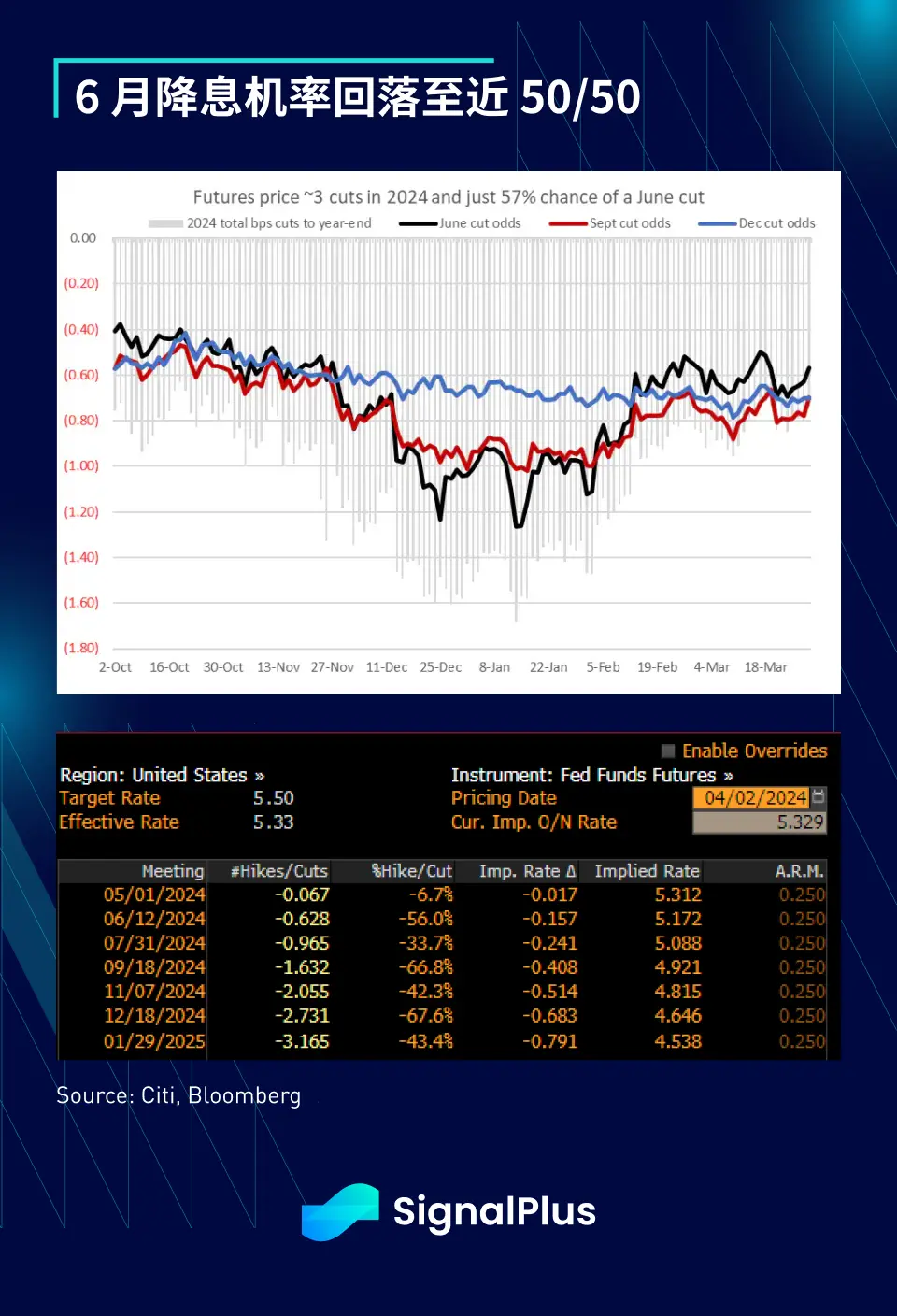SignalPlus Macro Analysis (20240402): US Inflation Pressures Rise Again


The market returned from the long weekend, but many asset classes experienced a sudden risk-off sentiment. Chairman Powell's message last Friday was also confusing; just a week ago, he held a clearly dovish stance, yet this time he stated that the economy has enough resilience to cope with the current interest rate levels. Powell's remarks came after the release of PCE data, where he made comments such as "we don't need to rush" and "given the robust growth of the U.S. economy and the very strong labor market, we have the opportunity to be more confident about the decline in inflation before taking the important step of cutting rates." The chairman did not sound eager to cut rates, was it due to significant internal resistance (like from Waller) to the dovish performance at the last FOMC meeting? Or was it influenced by political pressure in an election year? Or was he shocked by the market's dovish reaction to his previous comments? We have no answers.

The economic data from the past few days also does not support the rate cut narrative. The ISM Manufacturing Index expanded for the first time since 2022, particularly in employment, prices paid, and new export orders, which significantly exceeded expectations. Recent inflation data also shows that U.S. core inflation remains high, with the 6-month rolling super core CPI approaching 6%, and even core PCE rebounding above 3%, far exceeding the Federal Reserve's target. Additionally, the statement accompanying the S&P Global PMI index noted that "as factories pass on higher costs to customers, the average selling prices charged by producers rose at the fastest pace in 11 months, with inflation rates well above pre-pandemic averages," which does not sound like a trend of slowing inflation.



Despite a relatively friendly risk sentiment and Powell's supportive stance, the 10-year U.S. Treasury yield has been steadily rising this year. In February, the market believed that a rate cut in June was a certainty, but now the pricing reflects a probability of around 55% for a rate cut. However, due to the recent dot plot guidance from the Federal Reserve, the futures market stubbornly predicts three rate cuts in 2024; however, if economic data continues on its current trajectory, the dovish narrative may face increasing challenges.


Non-farm payroll data will be released this Friday, with the market generally expecting job growth to slow to 200,000, while the unemployment rate is expected to remain stable at 3.8%, and hourly wages are projected to hold steady at 0.3%. If the data comes in as expected, it should be favorable for risk sentiment, with the SPX options straddle reflecting a daily volatility of about 0.8%, consistent with previous non-farm payroll release days.

Seasonally, April is often a challenging month for the stock market, especially mid-month, which is rated as one of the worst-performing five weeks of the year. Aside from this Friday's non-farm payroll data and the CPI data on the 10th, the economic data for this month is relatively sparse, so if the CPI data is unfriendly, it could trigger a risk-off trend at the end of the month.

In the cryptocurrency space, meme coins remain popular, while BTC prices have hovered around $70,000 over the past month, but there have been quite a few long liquidations. Due to the one-sided positions, long funding rates remain high, and price movements during the Asian session tend to be more negative (for example, dropping below $66,000 this morning), while the New York session sees more positive price movements supported by ETF inflows (yesterday +$183 million). Are we merely witnessing a long-term redistribution trade, where native users accumulate long positions and slowly sell to mainstream investors through ETFs, but with not much significant outcome recently? As the momentum of cryptocurrency prices seems to be waning, attention should be paid to the potential decline in risk sentiment.












